#Most Reliable Ford Engines
Text
10 Most Reliable Ford Engines Ever Built - Simon Kim @HotCars
Along with a storied history of legendary cars, Ford boasts an incredible range of iconic engines that helped shape the automotive landscape
Since its establishment in the early 1900s, the Ford Motor Company boasts an enormous fleet of trucks, cars, tractors, and vans, estimated at well over 300 million. Under the hood of this beautiful and stylish range of automobiles are some of the most…
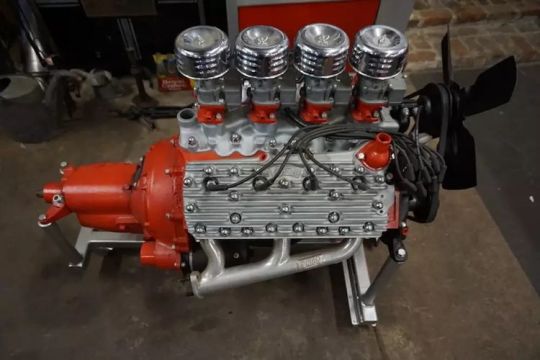
View On WordPress
2 notes
·
View notes
Text
The Top 10 Best Jeep Engine Swaps
If you’re in the market for a jeep engine swap, there’s no doubt that there are plenty of options to choose from. Here are the Top 10 Best Jeep Engine Swaps that you can make this year.
If you are looking to change the performance of your Jeep, there are a few swaps that you can do. One swap that is often recommended is a jeep engine swap. A Jeep engine swap can improve the overall power and…

View On WordPress
#10 Jeep Engine Swaps#Buick 225 V-6#Caddy 472/500#Ford 302 H.O.#Jeep Engine Swaps#L Hemi V#L I-6#L LSX V#L Pentastar V#L Stroker Crate Hemi V#RamJet 502#Top 10 Best Jeep Engine Swaps#Viper V-10#What is the best engine to put in a Jeep Wrangler?#What is the best V8 engine to swap?#What is the most popular engine swap?#What Jeep has the fastest engine?#What was the most reliable engine for a Jeep?#Which Wrangler engine is the fastest?
1 note
·
View note
Text

Ford GT40
The Ford GT40 is one of the most iconic cars in automotive history, renowned for its dominance in endurance racing during the 1960s. Here's the full story:
Origins:
In the early 1960s, Henry Ford II, known as "Hank the Deuce," was determined to beat Ferrari at the 24 Hours of Le Mans, the world's oldest active sports car race. Enzo Ferrari had rebuffed Ford's attempt to buy the Italian company, which led to Ford's determination to defeat Ferrari on the racetrack.
Development:
Ford tasked its newly acquired subsidiary, Ford Advanced Vehicles, with developing a car capable of winning Le Mans. The project was named GT (for Grand Touring) with the intention of building 100 road cars to homologate it for racing. Carroll Shelby, who had been involved in motorsports and had success with the Shelby Cobra, was brought in to manage the racing program.
GT40 Mark I:
The first iteration of the GT40, known as the Mark I, debuted in 1964. It was powered by a 4.7-liter V8 engine and showed promise but faced reliability issues.
GT40 Mark II:
Ford made significant improvements with the Mark II, featuring a 7.0-liter V8 engine, and refined aerodynamics. In 1966, Ford achieved its goal when the GT40 Mark II, driven by Bruce McLaren and Chris Amon, won the 24 Hours of Le Mans, marking the first time an American car had won the prestigious race outright.
GT40 Mark III:
In 1967, Ford introduced the GT40 Mark III, a road-going version of the race car. It featured a more luxurious interior and was intended for homologation purposes.
Continued Success:
The GT40 went on to win the 24 Hours of Le Mans three more times consecutively from 1966 to 1969, solidifying its place in motorsport history. Notably, the 1967 race saw an all-American victory with the GT40 Mk IV driven by Dan Gurney and A.J. Foyt.
Legacy:
The Ford GT40's dominance in endurance racing and its rivalry with Ferrari became legendary. It remains an icon of American automotive engineering and a symbol of Ford's determination to compete at the highest level of motorsport.
Modern Resurrection:
In the 2000s, Ford resurrected the GT nameplate with the Ford GT, a modern supercar inspired by the original GT40. The new Ford GT debuted in 2004 and again in 2017, paying homage to its predecessor while showcasing cutting-edge technology and performance.
226 notes
·
View notes
Note
Tell us about your current and past motor vehicles
gladly! this is gonna be a long post

this was my first car, she was a 1984 mercedes 300D turbodiesel. her name was clifford, named after a button on the dash from a defunct security system. in-line five diesel engine, sounded like a truck, was built like a truck, LOVED this car. i paid $600 for her in 2016. she had 308k miles when i bought her, and she went to the scrapyard with 314k the next year when the hood latches broke while i was on the highway and sent the hood into the windshield. i was okay but the repairs were just too much for a $600 car. she was awesome though, a real head turner even with her peeling clearcoat and plumes of diesel smoke
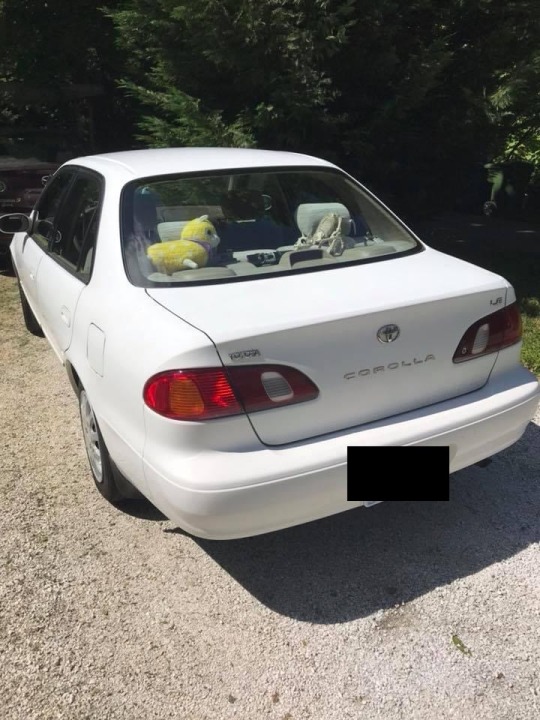
then there was the corolla! 1999, manual transmission. the best car i’ve ever owned. not my favorite but definitely objectively the best. bought off a friend also for $600, around 210k miles. surprisingly fun to drive, very reliable. drove from north carolina to massachusetts in that car, and then across massachusetts every week. her name was wanda, which carried over from the previous owner. drover her for a little over a year before the brakes failed and i rear ended someone
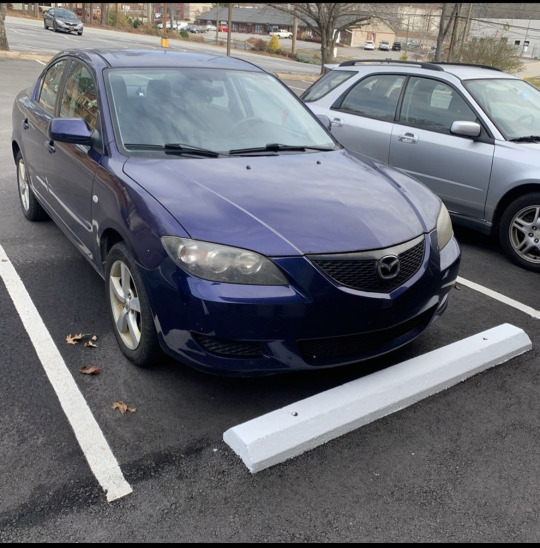
i replaced the corolla with an ‘05 mazda3 i called the tick, after the cartoon character. also bought from a friend. kept it through early 2021 i think, drove it through most of early quarantine. i didn’t love this car personally, in large part because the transmission and starter both went out on me within the first two months of ownership and the friend i bought it from was entirely unsympathetic. i sold it to my shitty roommate lol
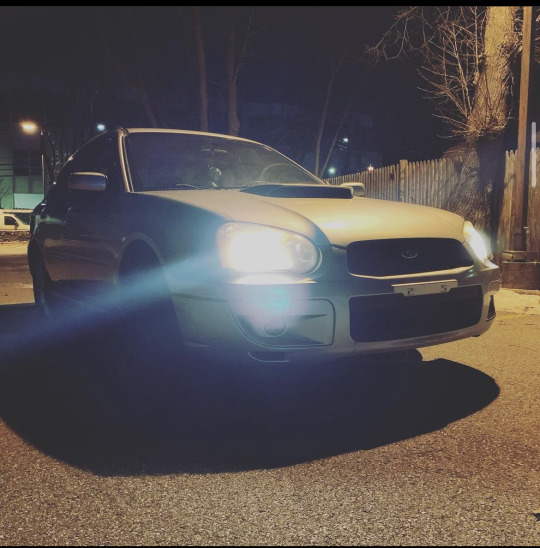
and then for some reason my mom gave me a sports car. she bought a new honda civic and handed down her 2004 subaru wrx wagon, with the manual transmission and everything. she’d named it the millennium falcon so i called her falcon. this car was a blast to whip around. that turbo boxer engine sounded amazing and this thing RIPPED on the highway. the biggest issues with it were that it really didn’t have all that much character on the road, and it took premium gas, so fill ups were EXPENSIVE. i sold her after having her for a few months because the clutch went out and i was quoted $2k to replace it because that’s what happens when you have a sports car. sold it as is to a guy with two other wrxs who wanted to fix it up and use it as a work car

this is the current baby! bit of an older picture because she looks uhhh worse these days but this is clifford jr the 2001 jeep cherokee xj. i’ve learned so much with this car, done a bunch of the work on her myself. she’s a fixer upper im reaching my limit on but she’s served me remarkably well and is my favorite car i’ve owned. not fast, not good on gas, but god she’s got some character. just rolled over 256k miles
like i said i’m reaching my wits end with the jeep, every time i fix something two more things break, and i can’t afford for her to keep being a money pit. so i’m starting to save for something else, ideally a late 80s honda or toyota, or a panther body sedan, like a ford crown victoria or mercury grand marquis
99 notes
·
View notes
Text




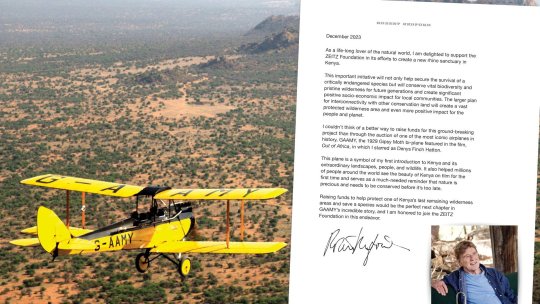

1929 De Havilland DH60GM Gipsy Moth
One of the most famous models of aviation’s cradle era, the De Havilland Gipsy Moth occupies the same space in its category as the Model T Ford in automobiles—a dependably engineered, reliable vehicle, that brought its mode of transportation to more people than any other before it.
Hundreds of examples were built and were flown by several significant aviators of the era, including the noted British aviatrix Amy Johnson, who in 1930 became the first woman to fly solo from England to Australia in her Gipsy Moth, “Jason.”
Then-owner Cliff Lovell supplied this aircraft in early 1985 for the filming of Out of Africa, starring Meryl Streep and Robert Redford in the epic love story of the Danish countess Karen Blixen and British aviator Denys Finch-Hatton.
Courtesy: RM Sotheby's
Offered to benefit the creation of a new rhinoceros sanctuary in Central Kenya
#art#design#flying private#travels#luxury lifestyle#private jet#airplane#de havilland#gipsy moth#rm sotheby#kenya#out of africa#movies#amy johnson#meryl streep#robert redford#aviation#1929
20 notes
·
View notes
Photo

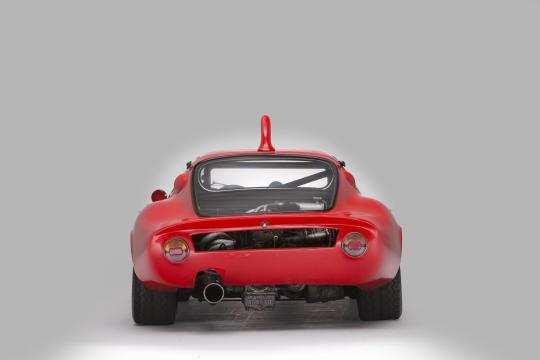


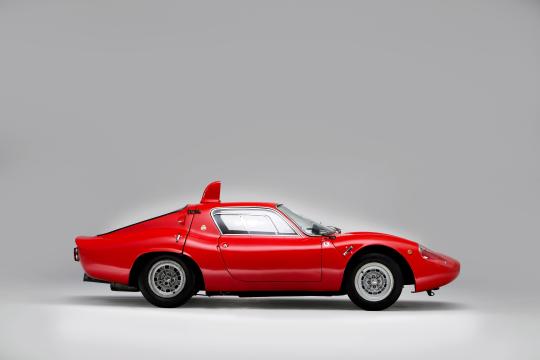


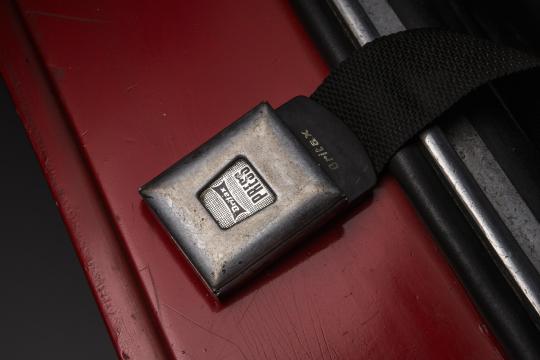
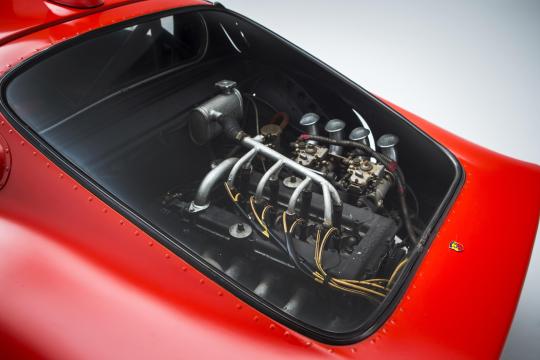
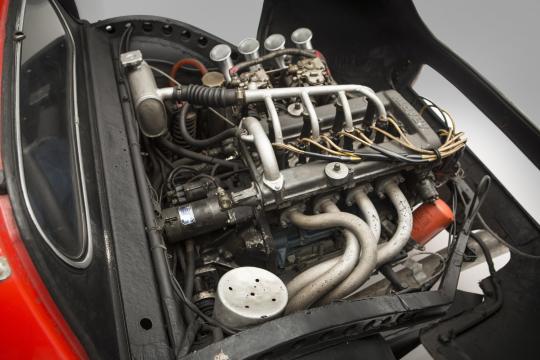
Abarth 1300OT Periscopica Coupé
In 1958, the American Chrysler Corporation pursued an entry into the European motor manufacturing market by buying 15 per cent of the French Simca company's stock from Ford. At that time, however, the dominant shareholder remained Fiat of Turin, and their influence remained distinctively apparent in the engineering and design of Simca cars for several years into the early 1960s. However, in 1963 Chrysler increased its Simca stake to a controlling 64 per cent by purchasing stock from Fiat, subsequently extending that holding to 77 per cent.
Chrysler had no interest in any continuation of the previously successful Simca Abarth and Abarth Simca high-performance car collaboration, which came to a juddering halt. In Turin Carlo Abarth found himself left more or less high and dry, but the supply of basically Simca 1000 chassis floor pans, upon which the sleek and superfast Abarth Simca 1600s and 2000s had been based, left quite a number in stock, as yet unused.
The popular legend is that it was upon these unused Simca platforms that Abarth then founded his 1300cc class Gran Turismo design for 1965 – the OT 1300. Abarth's technical team under Mario Colucci had developed a boxed pressed-steel chassis structure on the modified Simca 1000 floor pan to which allindependent suspension was attached with componentry drawn from the Fiat 850 shelves. The Abarth OT 1300 then emerged, to race for the first time as a prototype in the September, 1965, Nurburgring 500-Kilometre classic.
Driver Klaus Steinmetz hammered the new Coupé home to a fine third-place finish overall and the OT 1300 was up and running into the record books, becoming one of the most successful – and also one of the most distinctive – models that Abarth & C ever produced. The OT 1300's rear-mounted all-Abarth engine was overhung – in best Carlo Abarth-approved style. It was a 4-cylinder unit with twin overhead camshaft cylinder head, using a block with cylinder bore and stroke dimensions of 86mm x 55.5mm to displace 1289cc.
With two valves per cylinder and a 10.5:1 compression ratio, the engine breathed through two twin-choke Weber 45DCOE9 carburettors. Ignition was by two plugs per cylinder, fired by single distributor. Dry-sump lubrication was adopted and the power unit produced a reliable 147bhp at 8,800rpm. This lusty engine, perfected by Abarth's power-unit specialist Luciano Fochi with five main-bearing crankshaft, drove via a five-speed and reverse Abarth transaxle.
Wheelbase length of the OT 1300 was nominally 2015mm, front track 1296mm and rear track 1340mm. It featured moulded glassfibre clamshell-style opening front and rear body sections moulded by Sibona & Basano in Turin, and this pert-nosed Coupé became a familiar sight dominating its class for three consecutive years. Production of the OT 1300 began on May 15 1966 and ended on March 30, 1966, by which time the minimum production number of 50 required by the FIA for homologation as a Gran Turismo model had (allegedly) been achieved.
The most distinctive single characteristic of the OT 1300 Coupé, apart from its huge International success within its class, was its adoption of the Periscopica air-cooling intake on the rear of the cabin roof. Casual onlookers would assume that the periscopelike intake fed intake air into the rear-mounted engine, but this is absolutely not the case. Instead, the water and oil-cooling pipe runs through the cockpit area heated-up the cabin to what was generally considered to be an unacceptable level for endurance racing, and the periscope intake merely blasted cold air down into the cabin to cool the driver himself...
From the OT 1300 Mario Colucci developed the OT 2000 Coupé using the 1946cc 4-cylinder power unit perfected by his colleague Luciano Fochi and with some 215bhp at 7,600rpm that largerengined model was capable of exceeding 165mph in a straight line. In fact all these Abarths with their sleek aerodynamic bodies and light weight really were exceedingly rapid by the standards of the time and within their respective capacity classes.
97 notes
·
View notes
Note
So I had my dad talking to me about cars today, telling me how I should basically avoid getting any cars except those made by Japanese companies because of how shitty other countries manufacture their cars (mileage and life span)
Do you have any thoughts on this? I don’t know much about cars and I thought of this blog while I was having this conversation so that’s why I send here
Do I have thoughts on this. Do I have thoughts on this. Babygirl (gender neutral) I have thoughts on aspects of cars you wouldn't even conceive of. I have thoughts on aspects of cars that aren't even real. Up the ante, folks! Ask me which cars are most bisexual!
That aside, for my opinion:
Italian food is good.
But of course, when I eat out in Italy, I don't go to any random place because "this country does this well", because I'm not ordering from a country, or a region, or a city, but from a specific joint - and some of them suck, some dropped or rose in quality, some are exceptionally good/bad with certain things, hell, some serve foreign food and then what's the adage matter now!
That's why Yelp doesn't have country reviews.
Much the same, Japanese cars are usually pretty reliable, but Nissan spent the last two decades making a case against that claim (especially with their CVT transmission, a known ticking time bomb they've done fuck all about for years) with the help of whatever's left of the shell of Mitsubishi, and Infiniti is just the luxury brand of Nissan so ditto for it... indeed, another point to make, some cars are just based on, or outright are, cars from other brands.
Infinitis are built by Nissan, and usually based on the equivalent Nissans. Except the QX30, which is just a Mercedes GLA - which probably was part of the same deal through which Mercedes got to sell the Nissan Navara as the X Class.
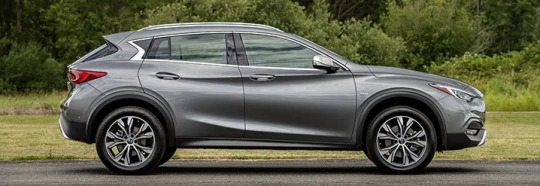
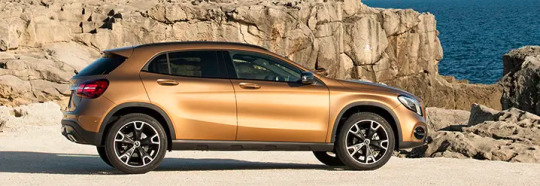

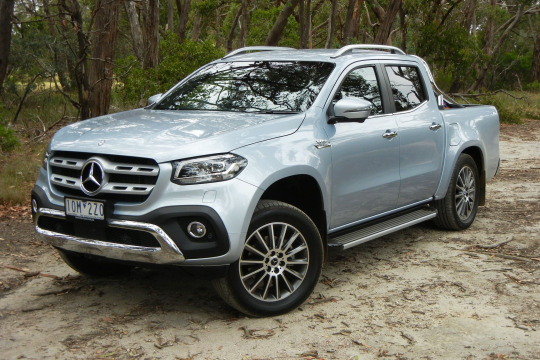
And there's a lot of cross-nationality brand partnerships like that, past and present, like the four-decade-long Mazda/Ford one, or the time Saturn had such a crappy engine they had to get Honda to give them a proper one. And by the way, the guy who posted that? He owns a different Saturn which took 360k miles of bare minimum care like a champ, because reliability can vary wildly within a lineup, and also a Volkswagen that's been a thorn in his side, which definitely wasn't the experience I had with mine, because mine is over twice as old, and a brand can completely change over time too! (You'd think they were run by people or something.)
In fact, reliability changing over time and models is the norm - not as drastically as, say, "older German cars were unstoppable tanks and now they're overly fit-prone electronics messes where everything is costly to buy and dastardly to replace" (which, however, is actually a notable trend), but usually in terms of "in this model, through these production years, this component was overly keen on failing" (as per my Accord post). Part of how Toyota (and by extension its luxury brand Lexus) rightfully earned its reputation of King Reliability is such cases in their production being especially few and far between, and none notable enough to become an automotive meme like Subaru head gasket failures (and no, the Camry dent doesn't count). So, say, Hondas may not be less reliable, just a bit less consistently so (but even there, Honda interiors tend to hold up much better than Toyotas', yadda yadda yay for nuance).
So if you are buying a used car (as you should) it's always important to research for potential common problems (for instance, pre-90s Toyota frames are to rust what the letter X is to Elon Musk) and thoroughly inspect the car, to check that nothing is broken and that it's been properly serviced.
That last part is very important, because reliability is not a tickbox, it's a spectrum, and a function of how a car was built and how it was maintained. Carelessness will kill any car sooner or later. Every car has fluids that will at some point need changing, wear items that will at some point need replacing, and the occasional part failure.
Even yours.
So even when it comes to your car, keep up with that stuff, or it will eventually catch up to you.
(And if regular services would tax your finances, look into how to perform them yourself - you'll find it's a lot easier than you thought, you'll give it a shot and it will be very rewarding and save you a lot of money!)
And also, if a hinge starts squeaking, if something starts sagging, if some trim breaks, if you get a dent or scratch, take care of those too. Not because they make your car work less or worth less, but because they foster an indifference that snowballs into neglect. Working on those little things will keep you feeling like your car is nice and your loving effort is going to keep it nice, dammit - in much the same way as it's important to take care of yourself and your environment for your mental health, to keep yourself feeling like you are making it and with your loving effort you are going to keep making it, dammit.
Links in blue are posts of mine explaining the words in question - if you liked this post, you might like those!
#i am genuinely so sorry for how long it took me to get to ya#i just spent ages perfecting this#writing and looking into a lot of things I ended up trimming and such#hope you like it!#japanese cars#maintenance#infiniti qx30#mercedes cla#nissan navara#mercedes x class#toyota#lexus
36 notes
·
View notes
Photo
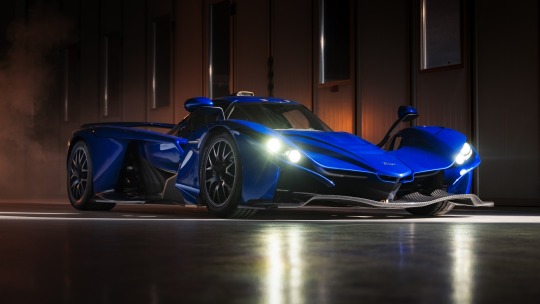
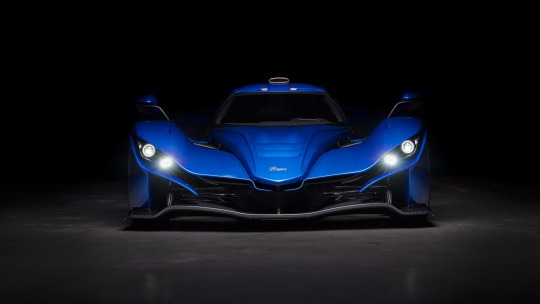

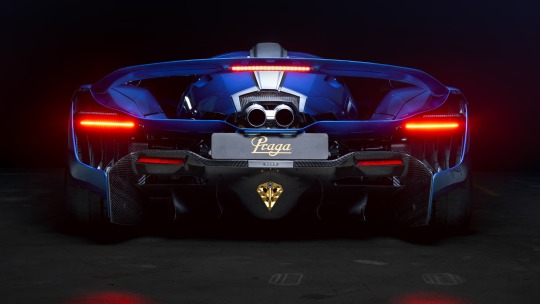
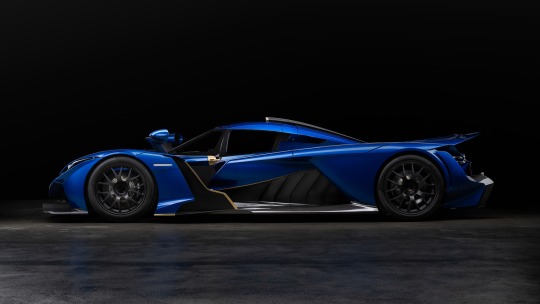
First Look: The Praga Bohema
Praga has revealed its road legal hypercar in pre-production prototype form: a high-performance, low-volume car designed around 3 core principles – lightweight, carbon, petrol.
The new Praga Bohema is a sub-1,000kg, mid-engined 2-seater that, in the right hands, is capable of extreme high performance on track targeting GT3 race car lap times on its semi-slick Pirellis. Yet it is also comfortable and practical for head-turning road trips.
With its carbon fibre monocoque and race-oriented fully adjustable suspension, it is extremely light, targeting just 982 kgs (wet without fuel), while its powerful Nissan GT-R-derived six-cylinder twin-turbo engine ensures reliability, ease of servicing and the potential for further performance tuning. Whilst the Bohema’s race-derived semi-automatic transmission will support a unique on-road experience with track-focused performance.
The Praga Bohema’s PL38DETT is based on Nissan’s famed 3.8-litre, twin-turbo V6 engine used in all its GT-R models since 2007. Initially drawing on Nissan’s experience at Le Mans, it is constructed around an aluminium alloy cylinder block, and there are double overhead camshafts per cylinder bank, with a continuously variable valve timing system on the inlet valves.
Uniquely, Nissan supplies brand new GT-R engines to Praga for the Bohema. Engine development and servicing requirements then sees Praga working with the UK’s renowned Litchfield Engineering; another long-time friend of the Praga brand. Litchfield has more than two decades of tuning experience and is known as the global authority on GT-R engines. Litchfield strips the new engines and converts them to dry sump, which reduces the overall height of the unit by 140 mm. This allows the engine to sit lower in the Bohema and prevents the risks of oil surge under high-speed cornering loads.
Litchfield also makes a number of modifications for increased reliability and power, including swapping to new twin turbos. In this base-Litchfield specification, Praga is targeting the Bohema production car to deliver up to 700 bhp at 6,800 rpm and 725 Nm of torque from 3,000 to 6,000 rpm, but Litchfield is known for building 1000 bhp-plus engines from the GT-R unit.
Praga has a long-standing partnership with Kresta Racing, the Czech Republic’s most highly respected rally team, where its spotless assembly facility will hand-build each Bohema, beginning in the first half of 2023. The company is known for its high standards of car preparation and assembly and was founded by Czech rally legend Roman Kresta. His historic race victories include the Czech national rally championship on five occasions, whilst also spending a decade in the World Rally Championship, driving for the official Ford and Skoda WRC teams.
174 notes
·
View notes
Text

SR-71 Blackbird crew members tell the story of the Inlet Unstart that prevented them to go Faster than Mach 3.2 during the Absolute Speed Record run in 1976
Developed from the Lockheed A-12 and YF-12A aircraft, the first flight of the SR-71 Mach 3 + spy plane took place on Dec. 22, 1964, and the first aircraft to enter service was delivered to the 4200th (later 9th) Strategic Reconnaissance Wing at Beale Air Force Base, Calif., in January 1966.
Throughout its nearly 24-year career, the SR-71 remained the world’s fastest and highest-flying operational aircraft. From 80,000 feet, it could survey 100,000 square miles of Earth’s surface per hour.
The SR-71 Blackbird was also the aircraft of choice to celebrate the United States’ bicentennial birthday in 1976. In fact, to celebrate, officials decided to attempt to break some records by means of the iconic reconnaissance aircraft.
As told by Angela Woolen in the article SR-71 pilots, crew relive absolute speed record, on Jul. 28, of that year, retired Maj. Gen. Eldon (Al) Joersz, the pilot, and retired Lt. Col. George Morgan, the reconnaissance systems officer (RSO), set the world absolute speed record for jet-powered airplanes with a speed of 2,193 mph.
The record still stands today.
SR-71 Blackbird crew members tell the story of the Inlet Unstart that prevented them to go Faster than Mach 3.2 during the Absolute Speed Record run in 1976

Retired Maj. Gen. Eldon Joersz, a former pilot, and retired Lt. Col. George Morgan, a former reconnaissance systems officer, sit inside the cockpit of the SR-71 Blackbird they flew when setting the world absolute speed record for jet-powered aircraft on Jul. 28, 1976. The two were at the Museum of Aviation in Warner Robins, Georgia, for the 40th anniversary of the historic flight. (U.S. Air Force photo/Tommie Horton)
Today, SR-71 #958, the Blackbird that made the speed record run is on display at the Museum of Aviation near Warner Robins, GA.
Noteworthy, during the record-breaking event, Joersz and Morgan experienced an inlet unstart that however didn’t prevent the iconic Blackbird to set the absolute speed record.
SR-71 pilot David Peters explains;
‘If Joersz and Morgan had just a normal unstart without a burner blow out if probably didn’t slow them down much but they certainly would have had the record higher without it.’
If it weren’t for the inlet unstart that temporarily jammed up an engine, they could have gone faster than 2,193 mph. In fact, they could have stayed under Mach3.3.
This note is from George Morgan: ‘Al and I had the ACTUAL speed record. 2200 indicated in our equipment aboard 958!
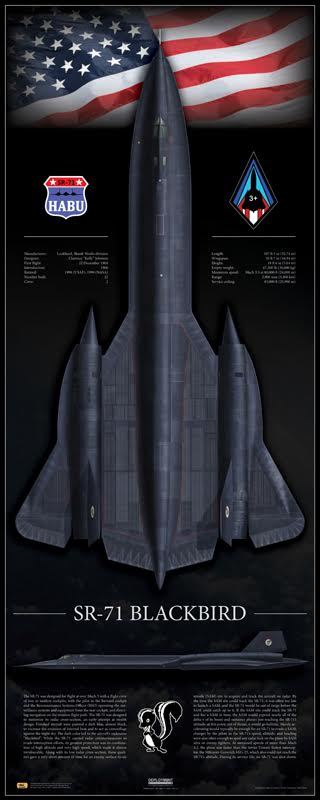
SR-71 print
This print is available in multiple sizes from AircraftProfilePrints.com – CLICK HERE TO GET YOURS. SR-71A Blackbird 61-7972 “Skunkworks”
‘Theirs…. 2193….NAH!’
Peters explains;
“Just to clear up a couple of points. First an unstart does not usually cause the engine to shut down. In this case it was just an unstart of the inlet which can be recovered rather quickly. Second unstarts were much more likely in the 2.6 to 2.9 range especially in the climb. High Mach unstarts were much more rare.”
It is true that any SR-71 with any crew could’ve made that record-breaking run. But the commander would’ve picked his most reliable crew that he had. And he picked Al Joersz and George Morgan to make the flight. In the early days of the SR-71 they really didn’t want to call any attention to the Blackbird. In the spirit of the bicentennial 200-year anniversary of the United States, President Ford asked if an SR could make the speed run. SR-71 commanders never said no to a President.
The plane flew through the first of its two passes at a much, much higher speed than what was required to set the record. Just before start of the second pass, one of the engines shut down. Before the engine could be restarted, the plane was well beyond the start line. The engine did recover from the unstart.
SR-71 T-Shirts

CLICK HERE to see The Aviation Geek Club contributor Linda Sheffield’s T-shirt designs! Linda has a personal relationship with the SR-71 because her father Butch Sheffield flew the Blackbird from test flight in 1965 until 1973. Butch’s Granddaughter’s Lisa Burroughs and Susan Miller are graphic designers. They designed most of the merchandise that is for sale on Threadless. A percentage of the profits go to Flight Test Museum at Edwards Air Force Base. This nonprofit charity is personal to the Sheffield family because they are raising money to house SR-71, #955. This was the first Blackbird that Butch Sheffield flew on Oct. 4, 1965.
Capt. Al Joersz, the record-setting pilot, said, “By the time we’d gone through the checklist, we’d already passed the second gate thus officially starting the run. Still, we exited the gate at Mach 3.2.”
Peters concludes:
“If they hadn’t had the unstart when they were going through the gate, the record speed would’ve been higher. Their goal was to make 2200 mph.”
However, after the inlet unstart, Joersz and Morgan could’ve pushed the Blackbird to the limit and gone Mach 3.3, but in 1976 they really didn’t want anyone to know how fast the SR-71 could go. It was still classified. For this reason, the US Air Force (USAF) chose to set the speed record “very carefully” avoiding to disclose how fast the SR-71 could really go.
Be sure to check out Linda Sheffield Miller (Col Richard (Butch) Sheffield’s daughter, Col. Sheffield was an SR-71 Reconnaissance Systems Officer) Facebook Pages Habubrats SR-71 and Born into the Wilde Blue Yonder for awesome Blackbird’s photos and stories.
Photo credit: U.S. Air Force and Lockheed Martin
@Habubrats71 via X

15 notes
·
View notes
Note
would you ever buy a [insert car that other people think is cringe but you think is neat]
(yes this is an open invitation to ramble about cars)
KISSING YOU ON THE MOUTH BESTIE
ok ok so yes i am going to go ramble but i’ll keep it relatively short
HERE ARE MY TOP FIVE DOGSHIT CARS I LOVE SO SO MUCH
5. Pontiac Aztek

any time you look up the ugliest cars ever made this will come up on the list and that’s fair because it is ugly as hell BUT i LOVE IT so much it came with a goddamn built in TENT. it was built on a minivan platform so this bitch could haul so much while not being overwhelmingly big. she may be ugly but she has the RANGE honey. and one person’s ugly is another’s quirky. pontiac aztek my beloved one of the only cars made after 1990 i genuinely want
4. Ford Pinto
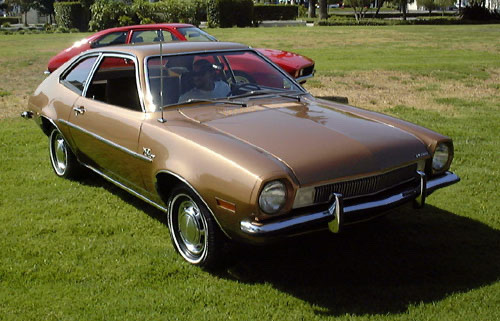
OK OK HEAR ME OUT LISTEN. YES THIS CAR KILLED PEOPLE. YES EVERY FOR EXEC SHOULD GO TO HELL FOR KNOWING THAT AND NOT RECALLING IT FOR YEARS. BUT. they did eventually fix that pesky little exploding issue and what was left was a capable, fun, gorgeous little economy car, and models with the gas tank issue addressed have proven to be relatively reliable for 40 year old american economy cars
3. 2000s MOPAR
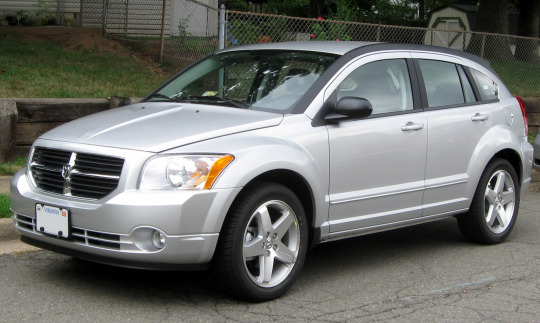
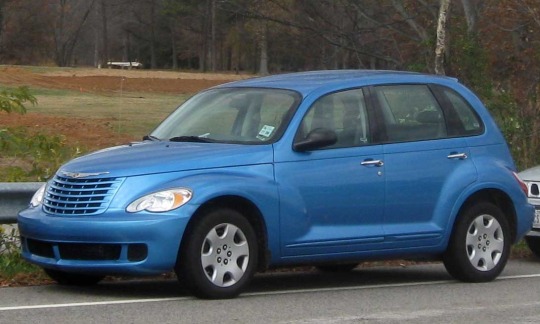
yeah this was a dogshit era for dodge/chrysler/jeep but i’m so deeply enamored by all these dramatically failed experiments. the dodge caliber, dodge magnum, chrysler pt cruiser, plymouth prowler, SO many bad cars that kinda bang. to me. they all have the energy of those fossil pokemon from sword and shield that clearly want nothing more than death but you can’t help but love their cheap, plastic, dogshit charm
2. Nissan Murano CrossCabriolet
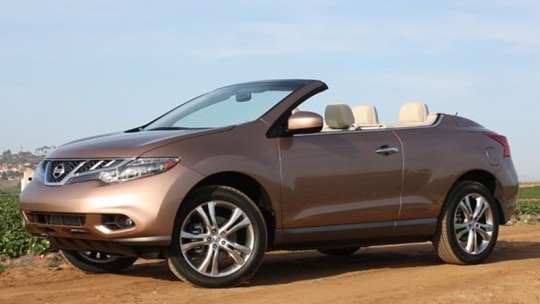
Ok so technically i don’t want one per se although that’s more because i hate almost all cars made after 2000, but this thing got so much hate and like i get it but i fucking love convertible suvs and i think there should be more. yes i know the bronco and wrangler exist rn but i need more with barbie energy like this. chop the top off a rav4 and maybe i’ll consider a car payment. i won’t but like maybe
1. MALAISE ERA BABYYYYYY

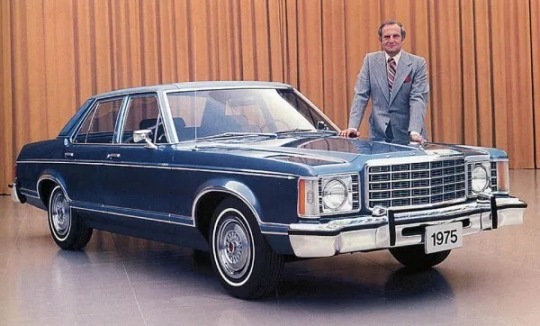
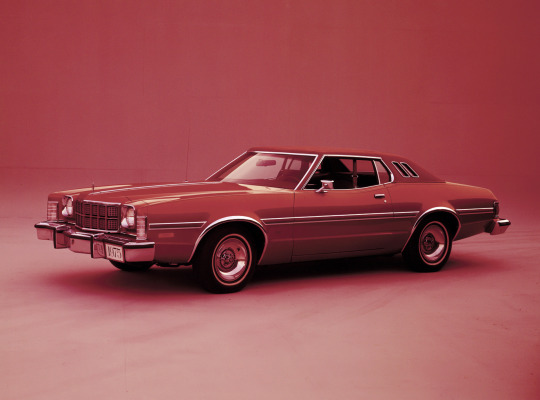
Here’s some more specifics about the malaise era but this is the era of cars i’m probably the most autistic about lmao, american cars from the mid 70s to the early 80s. tldr during this time the government was cracking down on efficiency and fuel consumption so american car manufacturers had to start figuring out how to make their giant gas guzzling giants of the road more economical. on top of that imports from japan were getting popular, which were smaller, cheaper, and easier to drive. america however was stupid and full of cocaine so they kept making giant cars but just made them cheaper and less powerful. this didn’t mean smaller engines mind you, it just meant they choked the existing giant engines and made them weaker. so the cars from this era are still huge and clunky but now with more plastic and less horsepower while still weighing the same, which means they all drive like fucking trucks, even the smaller ones. eventually manufacturers either figured out how to make economy cars (though they still weren’t as efficient as japanese ones) but for a chunk of time in the late 70s american cars were ugly, underpowered, and kinda cheap. and i LOVE them. i love the brown on brown on brown, love the tackiness, love the underpowered v8 engines. malaise era my beloved ❤️❤️
37 notes
·
View notes
Text
From Classic to Electric: The Transformation of Iconic Car Models
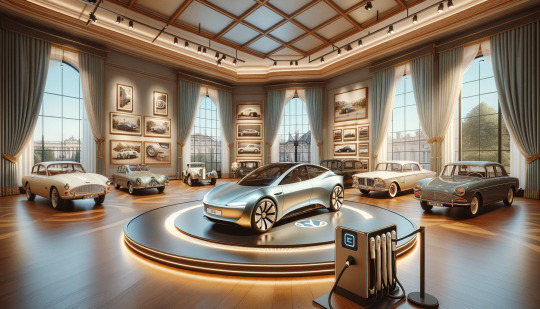
Electric Revolution in the Automotive Industry
The automotive industry is undergoing a monumental shift, transitioning from the roar of gasoline engines to the hum of electric motors. This transformation is not just about the emergence of new electric vehicle (EV) brands, but also about the electrification of some of the world's most iconic car models. This transition to electric power is driven by a combination of environmental concerns, advancements in battery technology, and changing consumer preferences. The journey from classic internal combustion engines to electric powertrains has been both challenging and exciting, reshaping the automotive landscape as we know it.
The Resurgence of the Volkswagen Beetle
One of the most beloved car models in history, the Volkswagen Beetle, has made a comeback in an electric avatar. Originally launched in the 1930s, the Beetle became a symbol of simplicity and reliability. In recent years, Volkswagen announced plans to revive the Beetle as an electric car, part of its broader strategy to introduce more electric models. This new electric Beetle aims to combine nostalgia with modern EV technology, appealing to both classic Beetle lovers and new-age environmentalists. While retaining its iconic shape, the electric Beetle is expected to feature advanced technology like fast charging and a substantial range, catering to the needs of today's EV market.
The Electric Transition of the Ford Mustang
The Ford Mustang, an emblem of American muscle cars, has also embraced electrification. The Mustang Mach-E, an all-electric crossover, marks a significant departure from the classic Mustang's V8 engine tradition. Launched in 2020, the Mach-E combines the Mustang's legendary performance with the benefits of electric propulsion. It offers a range of up to 300 miles on a single charge and accelerates from 0 to 60 mph in just 3.5 seconds. The Mach-E has been well-received, signifying a successful blend of an iconic legacy with futuristic technology.
MINI Cooper's Electric Makeover
The MINI Cooper, known for its distinctive design and agile handling, has also joined the electric wave. The launch of the MINI Electric brings a new dimension to this British icon, maintaining its classic aesthetics while integrating cutting-edge EV technology. With a range of around 145 miles per charge and a 0 to 60 mph time of around 7 seconds, the MINI Electric retains the brand's fun-to-drive character. This transition reflects the brand's commitment to sustainability while preserving the essence that has made the MINI a popular choice for decades.
Porsche's Electrification with the Taycan
Porsche, synonymous with high-performance sports cars, has made a bold entry into the EV market with the Taycan. The Taycan is not just Porsche's first fully electric car but also a powerful statement in the luxury EV segment. With its exceptional performance, delivering up to 750 horsepower in the Turbo S model, and a range of up to 227 miles, the Taycan has set new standards for electric sports cars. It represents how traditional sports car manufacturers are adapting to the electric era without compromising on performance and luxury.
The Transition of Supercars to Electric Power
The shift to electric is not limited to mass-market models; even supercars are getting electric makeovers. Brands like Ferrari and Lamborghini, known for their powerful engines and exhilarating performance, are exploring electric and hybrid models. The move towards electrification in supercars is particularly significant, as it challenges the traditional notion that electric vehicles can't match the performance of gasoline-powered sports cars. This transition is a testament to the advancements in EV technology, where electric motors can deliver instant torque and unmatched acceleration.
Challenges and Future Prospects
Despite the excitement, the transition from classic to electric models poses significant challenges. These include maintaining brand identity, meeting consumer expectations for performance and range, and managing the higher production costs of EVs. However, the future looks promising as battery technology continues to improve, charging infrastructure expands, and public acceptance of EVs grows. The transformation of these iconic car models into electric versions is not just a trend but a glimpse into the future of transportation, where sustainability meets style and performance.
5 notes
·
View notes
Note
Hey,
I don't know if you know a lot about cars or not but I've compiled a list of cars of what the senshi would drive and you can tell me what you think.
(If you can look it up if you want)
(This is also going to be a long one lol)
Usagi- Newer Volkswagen Beetle because she thinks it's cute
Ami- Toyota Corolla or Honda Civic. She prefers something reliable and economical.
Makoto- Toyota FJ Cruiser or New Ford Bronco because I see her as an off road driver who enjoys exploring.
Rei- Probably something that runs and drives but I would lean her towards something that is cheap and practical while still enjoying it. Probably a Mitsubishi Lancer Evo or a Subaru Impreza WRX Hatchback.
Minako- Something cool like a BMW M5 F10 (Rip water pump lol) or 2012 Mercedes SL-Class (Rip engine due to trashing the shit out of that car lol)
Michiru- Something fancy yet practical such as a Mercedes E-Class Wagon Diesel or Volkswagen Passat 4Motion.
Haruka- Sport cars obviously lol. I would think a BMW M3 E46 Convertable for daily driver and Volkswagen Golf R to take Hotaru to school while still looking cool lol
Hotaru- Haruka's Golf but Michiru would get her a Toyota Yaris to start but if she doesn't want it, then she's going to get her own car lol.
Setsuna- Anything that runs and drives lol
I love this question! 🌞🚙 (Though I warn I'm not a knowledgeable car person and most of this is based on aesthetics. Also, I'm adding to, not disagreeing with your choices. I like the Yaris!)
Usagi - I agree on the newer Beetle Bug. She needs an automatic, it would be pale yellow with cute glitter decals on the windows and a pink license plate frame. I'd even say she has a pink fuzzy steering wheel cover and some kind of cute pink seat covers. There would be a little crystal hanging from the rearview mirror.
Rei - I feel like I'm being mean to her, but Rei has a faded 1977 Red Gremlin hatchback with the white stripes. It runs (and not much else). And she can shove a dozen people into the hatchback if she really tries. She's no frills with this and also refusing to take anything from her father even though he could have/maybe offered her a nicer vehicle.
Ami - this one was harder. I actually see her on a scooter with a cute little basket on the front. Pale blue with white details and a matching helmet. But, if she were to get a car, it would be a Smart Car. Same pale blue with white details and a little black cat decal on the back window. She's getting her transportation to take her from point A to point B without really thinking of passengers. If it's more than just her going anywhere, the other person is driving. Or alternately, a dark blue Prius.
Makoto - my girl has a small, budget-friendly pick-up truck. Specifically, a Chevy LUV (manufactured by Isuzu). Fading baby blue with a rust spot on the hood and a pink plastic flower hanging from the rearview mirror. She keeps an old wooden crate in the bed to throw stuff in and has a flowered license plate frame. Alternately, she gets a classic Bronco. There's still a wooden crate in the back.
Minako - my party girl gets a party vehicle. A bright sunny yellow VW Bus with polished chrome. It's a bitch to park in Tokyo but she loves it. It has a hippie stoner look but only because Minako loves the aesthetic of all the rainbows and colors and peace sign stickers. There's a blue bird figure glued to the dashboard and she pats its head every time she gets in. Fuzzy dice! Artemis has his very own customized cat seat slung over the front bench (it can be relocated if he wants to get in the back to get away from the commotion of the entire crew on a road trip). She has a custom license plate - SAYLAV
Haruka - like you said, definitely sport cars. And more than one because she married really well. 😁 I definitely see her going with mostly modern cars, like day one off the assembly line. There's a Porsche involved. But there has to be a classic 1965 Shelby Mustang in there somewhere. White with a dark blue racing stripe. She would not besmirch her car with decals. LOL
Michiru - she's going for classy and high end. I had to look some of these up because I'm not familiar with high end 😅, but I could see her in something like a Lexus LFA as her everyday driver. But I'm also giving her a high end modern Jeep for fun, like when they go on trips to the mountains. It is teal. Because she is girly.
Setsuna - she's going for basic use and reliability. Cadillac XTS in dark burgundy.
Hotaru - she'll inherit Michiru's Jeep and have it repainted purple. 😎
#sailor moon#the girls and their rides#sailor mars#sailor mercury#sailor jupiter#sailor venus#sailor uranus#sailor neptune#sailor pluto#sailor saturn
6 notes
·
View notes
Text

1960 Ford Galaxie Sunliner Interceptor 360 Package
Where do we start with the Ford Galaxie? In what was a precursor to the mainstream muscle car era, the Galaxie Sunliner was a unique option. Featuring the Thunderbird 352 Super V-8, the Galaxie Sunliner was the lowest-priced full-size Ford sedan you could get at the time. Police departments embraced the 360 packages because of its affordable price tag and high performance. Unfortunately, the time has not been friendly to the 360 packages due to various problems.
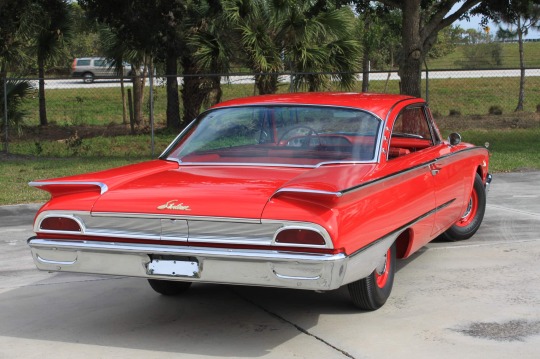
The Thunderbird 352 V-8 is not the most reliable powerplant, not to mention the fact that the engine is almost 60 years old now. If you can find a Galaxie that hasn’t been abused from years of police work, you might be in luck. Yet because the Galaxie Sunliner was never as popular as other well-known muscle cars, most of these have already ended up in the junkyard.
138 notes
·
View notes
Video
vimeo
Conquer the Wild: America's Top 4x4 Vehicles Gear Up for Adventure! from Our Auto Expert on Vimeo.
In the heart of America's rugged landscapes, a new breed of 4x4 vehicles is making headlines, promising to take your adventures off the beaten path to the next level. With the market more crowded than ever, discerning which vehicle will serve as your next expedition ally can be as challenging as the terrains you aim to conquer. Today, we delve into the world of the most sought-after 4x4s, from the iconic designs of the Land Rover Defender to the family-centric Jeep Grand Cherokee, each boasting features that set them apart in a fiercely competitive arena.
After a hiatus that left enthusiasts yearning, the 2024 Ford Bronco has roared back onto the scene, not just to stir nostalgia but to assert its dominance with a starting price of $41,025. This isn't merely a comeback; it's a declaration of war against the Jeep Wrangler, equipped with a Bronco Raptor variant that houses a 400-hp twin-turbo V-6 engine, ready to tackle any challenge thrown its way.
Then there's the 2024 Land Rover Defender, which commands attention not just with its starting price of $57,875 but with a design that nods respectfully to its predecessors while embracing the future. Beneath its stylish exterior lies a 518-hp supercharged V-8 engine, capable of launching the Defender to 60 mph in an astonishing 4.4 seconds, making it a potent mix of heritage and high performance.
For families who live for the thrill of exploration without sacrificing comfort, the 2024 Jeep Grand Cherokee emerges as the front-runner. With a base price of $41,330 and a 293-hp V-6 engine, it promises a blend of overlanding capability and everyday utility, ensuring that every trip is memorable.
The 2024 Jeep Wrangler, priced from $33,990, continues to uphold its legacy as the quintessential off-roader. Factory-equipped to navigate through almost any terrain and updated to offer modern comforts, the Wrangler demonstrates that practicality and adventure can go hand in hand.
Not to be overlooked, the 2024 Toyota 4Runner, with a starting price of $41,350, maintains its stronghold on reliability in the 4x4 segment. Its longstanding presence since 2009, coupled with a massive fanbase and robust aftermarket support, cements its reputation as a durable companion for the long haul.
For those seeking an all-encompassing solution, the Chevrolet Tahoe starts at $56,095 and doesn't disappoint. It merges the toughness of a truck-like chassis with a genuine four-wheel drive system, offering the capability to tow over 8,000 pounds and accommodate up to nine passengers, making it the epitome of versatility.
As we explore these titans of the 4x4 world, it becomes evident that each vehicle offers a unique proposition. From the style and power of the Land Rover Defender to the unmatched versatility of the Chevrolet Tahoe, and the family-friendly Jeep Grand Cherokee, the market is teeming with options that cater to every adventurer's needs.
In the quest for the perfect 4x4 companion, these vehicles are not just tools but partners in adventure, designed to meet the demands of both the untamed wilderness and the urban jungle. With the landscape of 4x4 SUVs richer and more diverse than ever, finding your ideal match means embarking on an adventure in itself. May your journey lead you to the 4x4 that not only drives you forward but inspires your next unforgettable expedition.
3 notes
·
View notes
Text
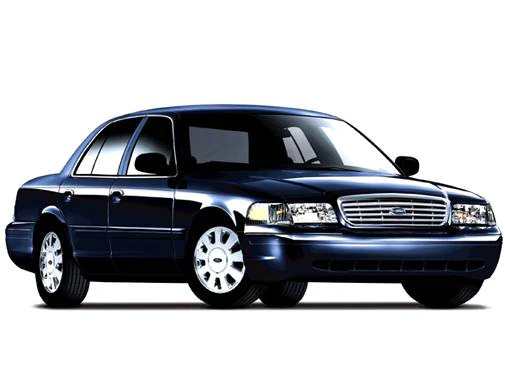
The Ford Crown Victoria is a full-size sedan that was produced by Ford Motor Company from 1992 to 2011. In 2008, the Crown Victoria underwent some significant changes, both in terms of its design and performance.
The 2008 Ford Crown Victoria featured a new front grille, redesigned headlights, and updated taillights. The car also had a new bumper and hood design, which gave it a more modern and aggressive look. Additionally, the interior of the car was updated with new materials and improved technology, including an upgraded audio system.
Under the hood, the 2008 Crown Victoria featured a 4.6-liter V8 engine that produced 224 horsepower and 275 lb-ft of torque. The engine was mated to a four-speed automatic transmission, which delivered power to the rear wheels. The car also featured a new exhaust system, which improved performance and reduced emissions.
One of the notable features of the 2008 Crown Victoria was its safety features. The car came standard with side airbags, traction control, and antilock brakes. It also featured a reinforced frame and a safety cage design, which improved the car's crashworthiness.
The 2008 Crown Victoria was popular among law enforcement agencies, as it was well-suited for police use. The car's large size and powerful engine made it ideal for high-speed pursuits, while its safety features and durability made it a reliable choice for law enforcement agencies.
In 2011, Ford discontinued the Crown Victoria, marking the end of an era for one of the most popular full-size sedans in history. Despite its retirement, the Crown Victoria continues to be a beloved car among car enthusiasts and law enforcement agencies alike, thanks to its performance, reliability, and iconic design.
9 notes
·
View notes
Photo
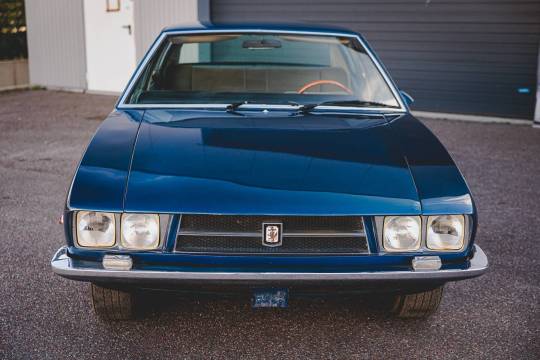
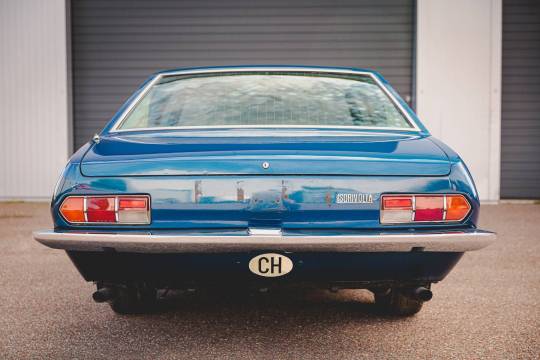
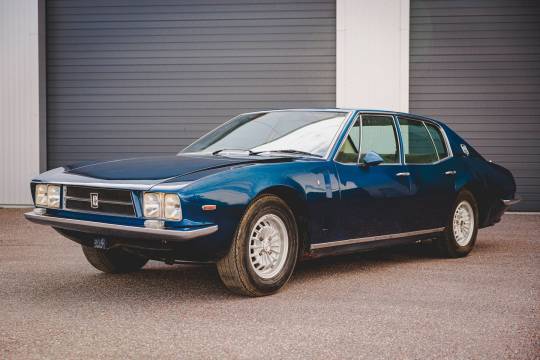





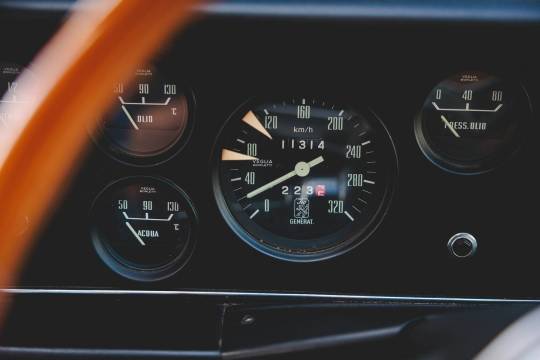

ISO Rivolta Fidia
Bubblecar manufacturer Iso joined the ranks of supercar constructors in 1962 with the launch of the Giotto Bizzarrini-designed Rivolta coupé at the Turin Motor Show.Renzo Rivolta's Isothermos company had begun life pre-war making refrigerators, turning to the manufacture of scooters, under the Iso name, after the war and thence to the highly successful Isetta bubblecar.Interviewed for Octane magazine (issue 151) Renzo's son Piero recalled that his father liked sports cars but could not find one that really suited him; one that was fast, comfortable and reliable. “He decided that Iso should produce a fast car that was genuinely useable every day, and priced somewhere between a Jaguar and a Ferrari.” The result was the Rivolta.Iso's first supercar set the pattern for those that followed: Bizzarrini-designed chassis, Bertone coachwork and Chevrolet engines, its future developments including the long-wheelbase, Ghia-styled Fidia four-door saloon, the muscular, short-wheelbase Grifo and the Rivolta-replacement Lele.Iso's most successful model, the Rivolta was produced up to 1970, by which time a total of 797 cars had been built.The Iso Fidia (or Iso Rivolta Fidia or, originally, the S4) was a much rarer car, with only 192 known to have rolled off the production line.The first models were powered by a 5.4-litre 355HP Chevy V8, accelerating the saloon from zero to 60mph in about seven seconds. From 1973, however, a 5.8-litre Ford V8 engine was used, developing some 325HP.John Lennon bought the second Fidia ever made.
58 notes
·
View notes